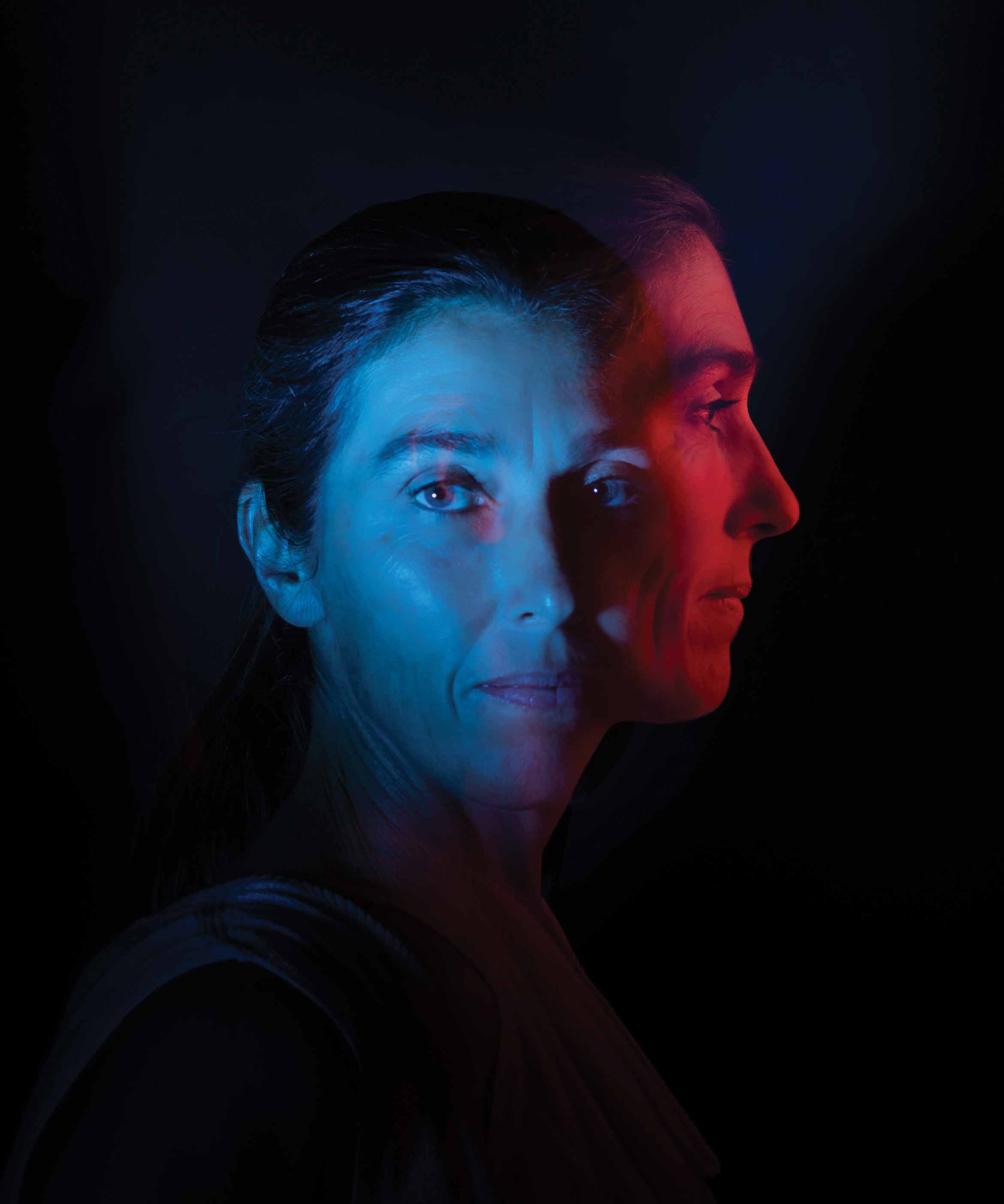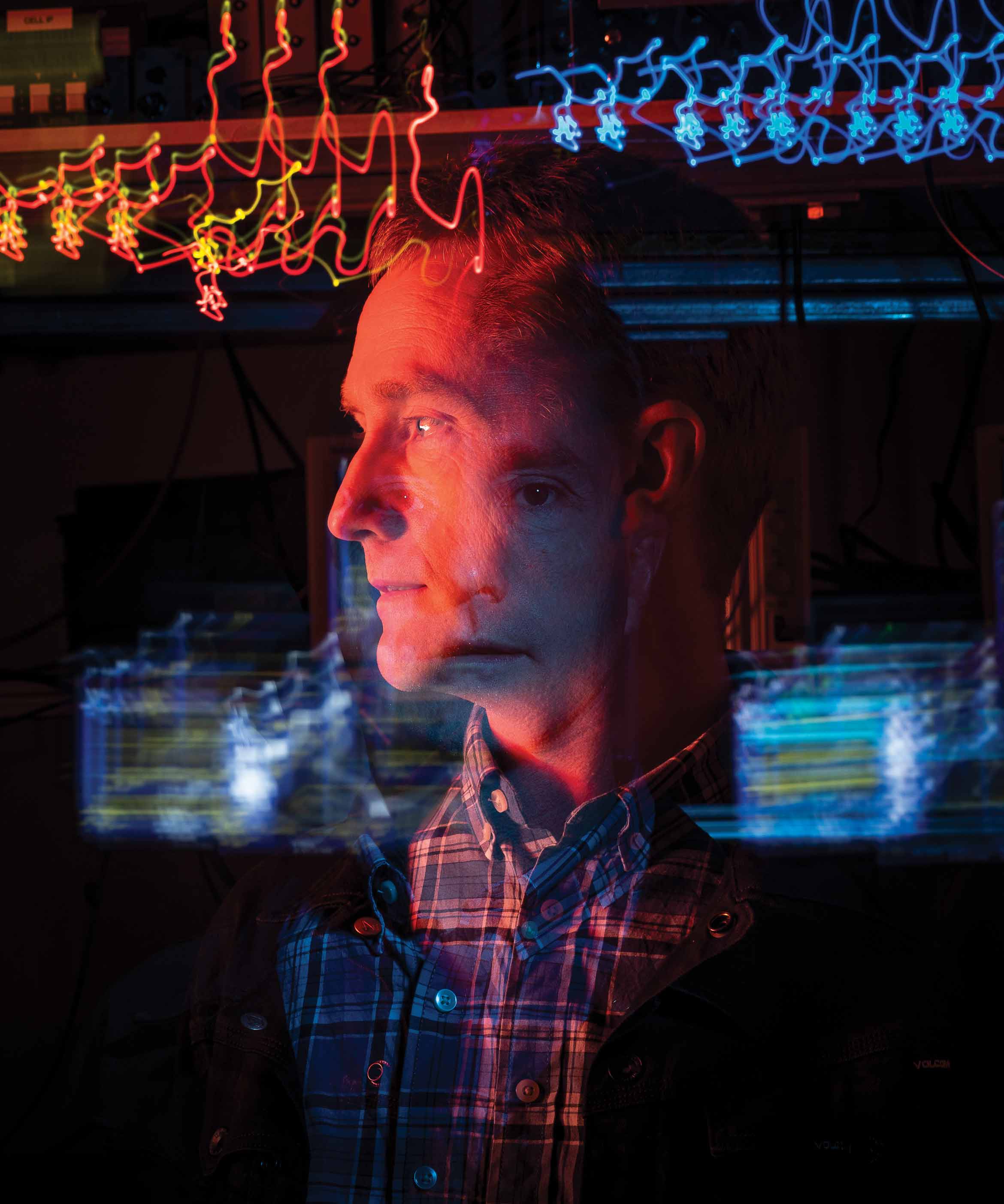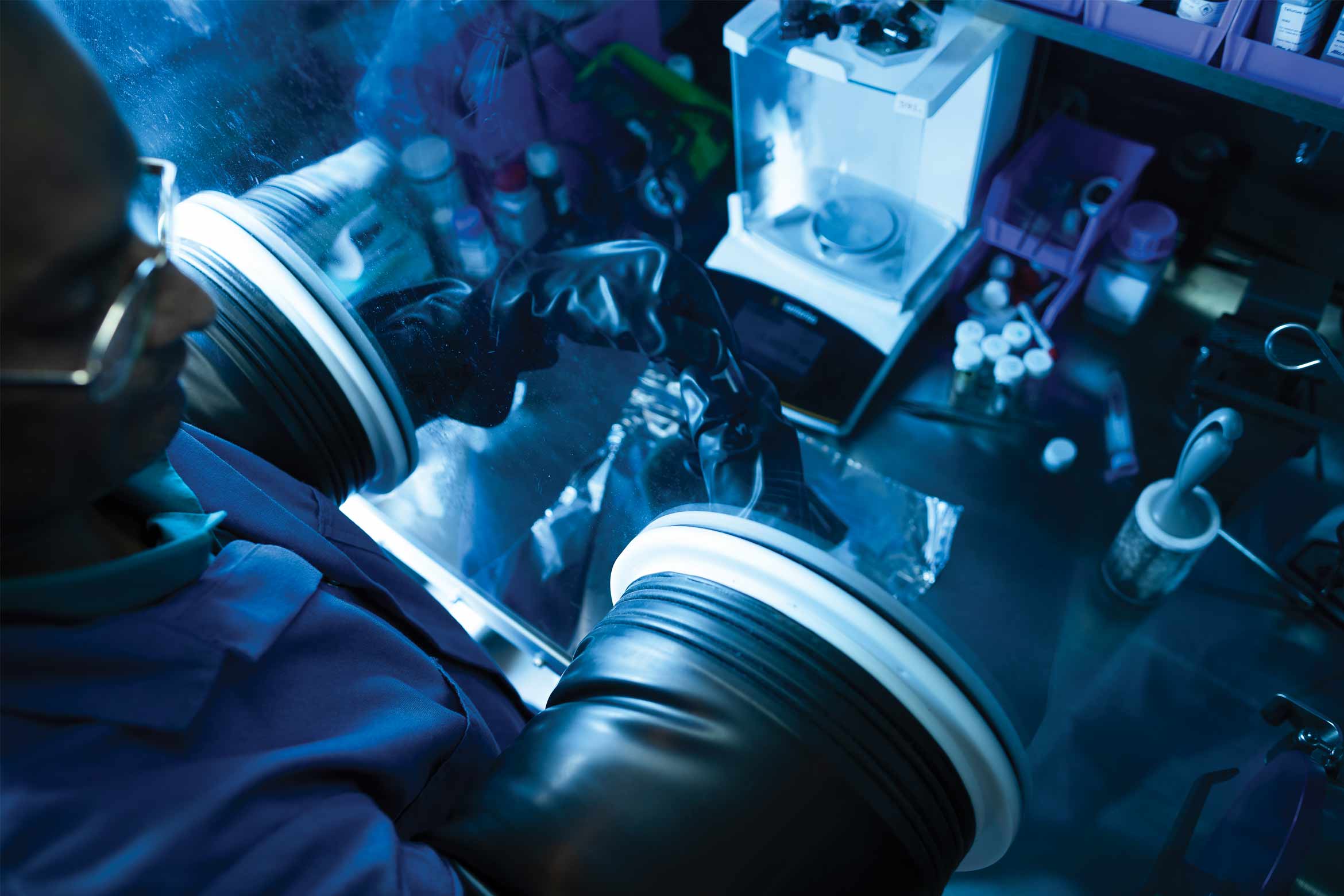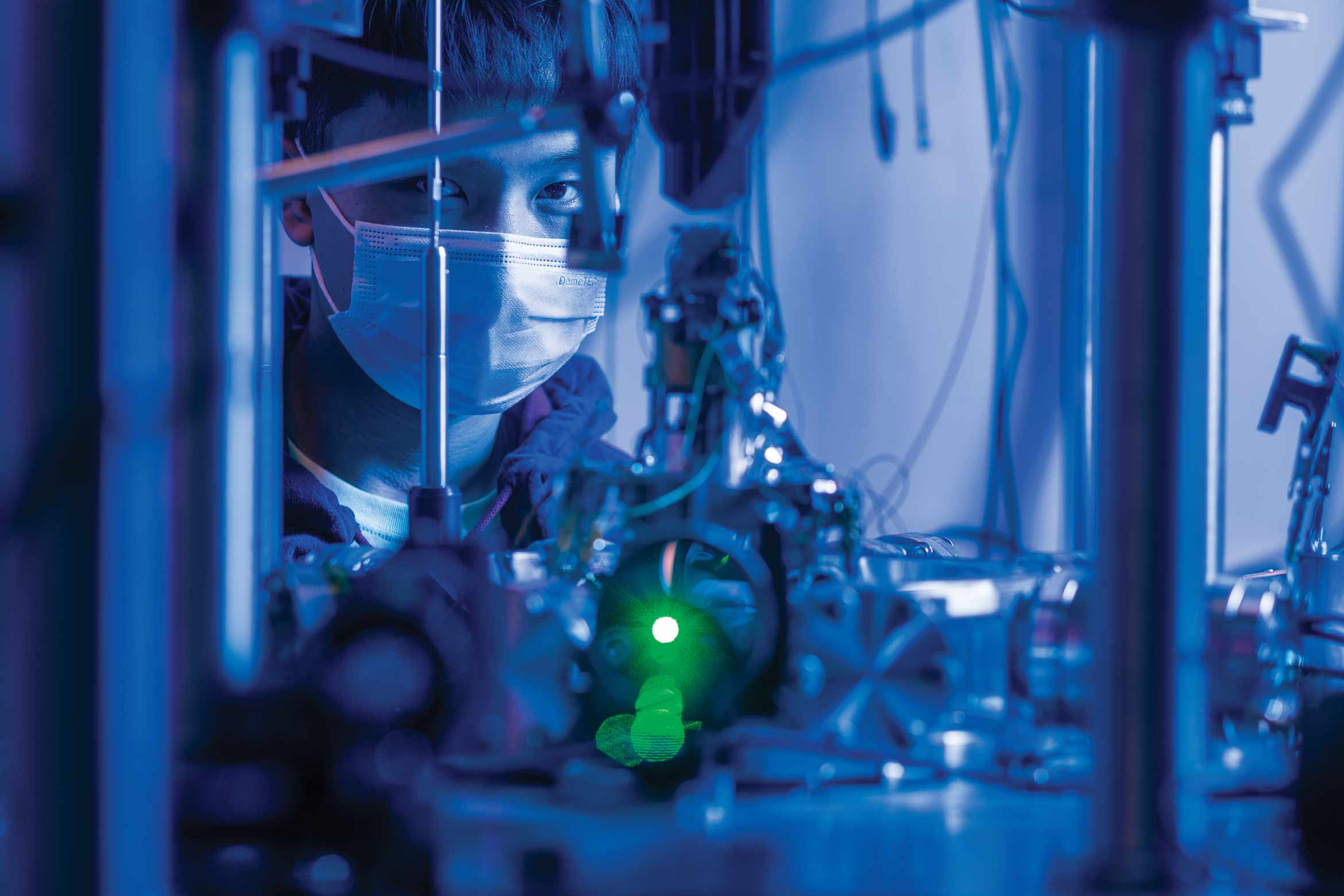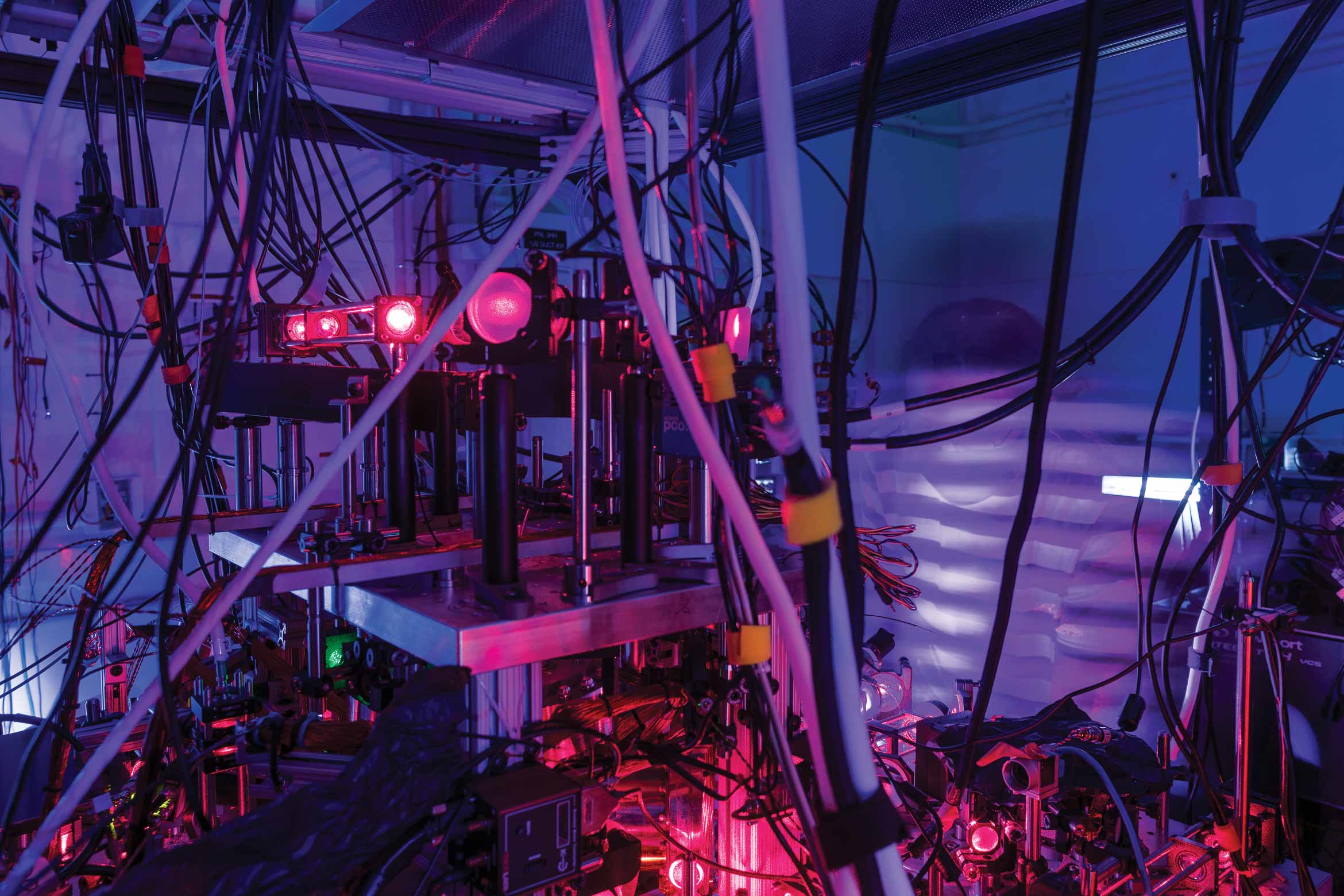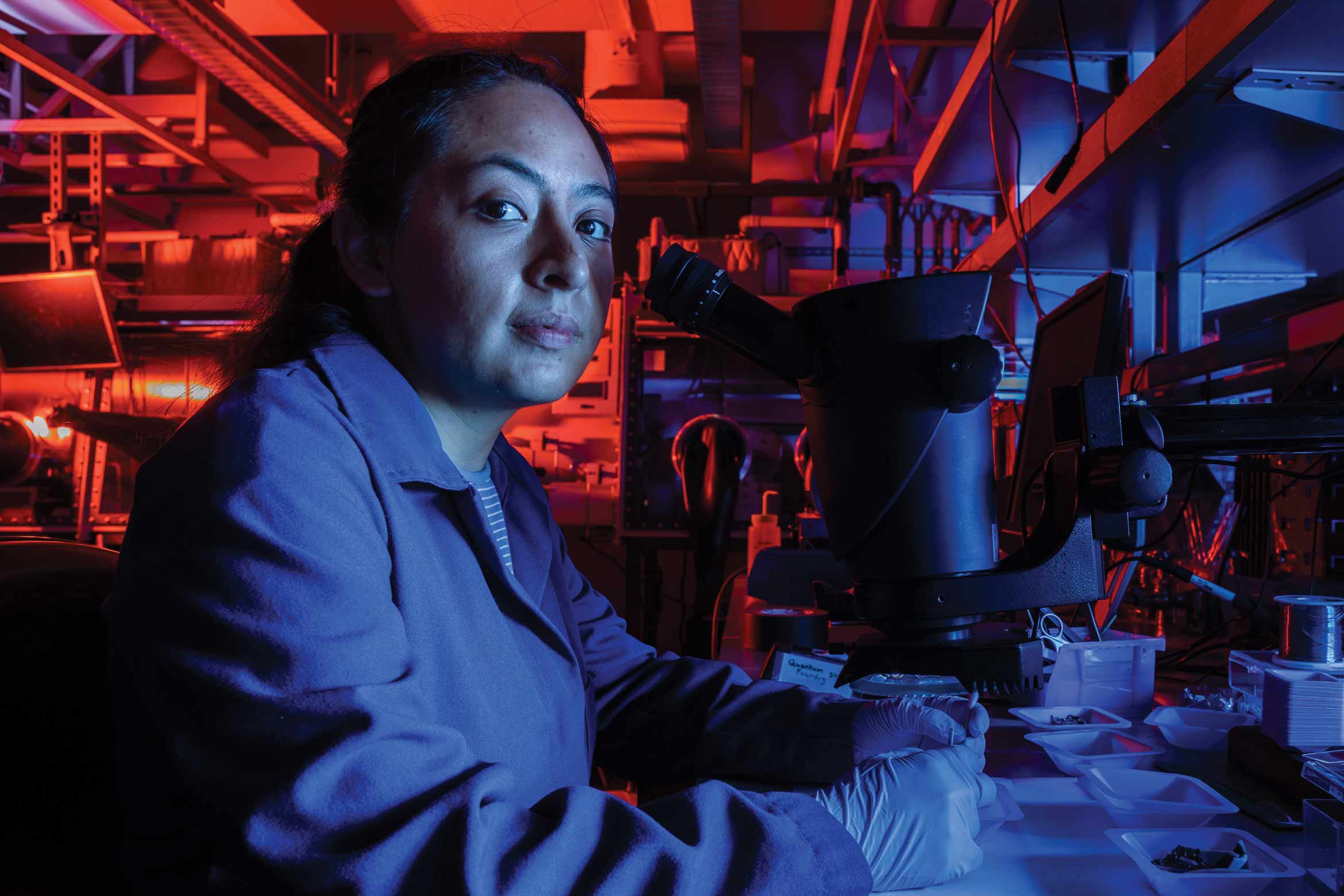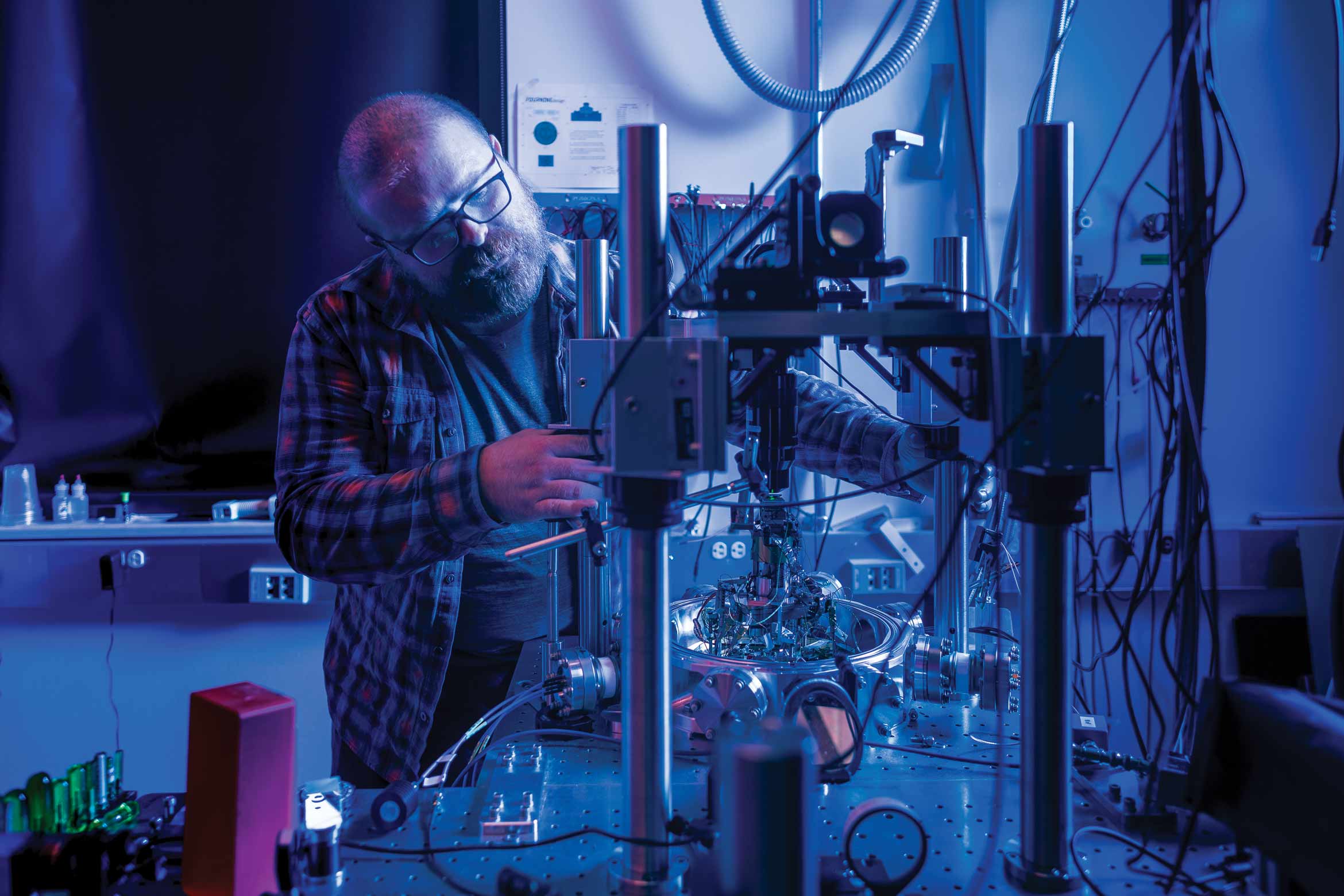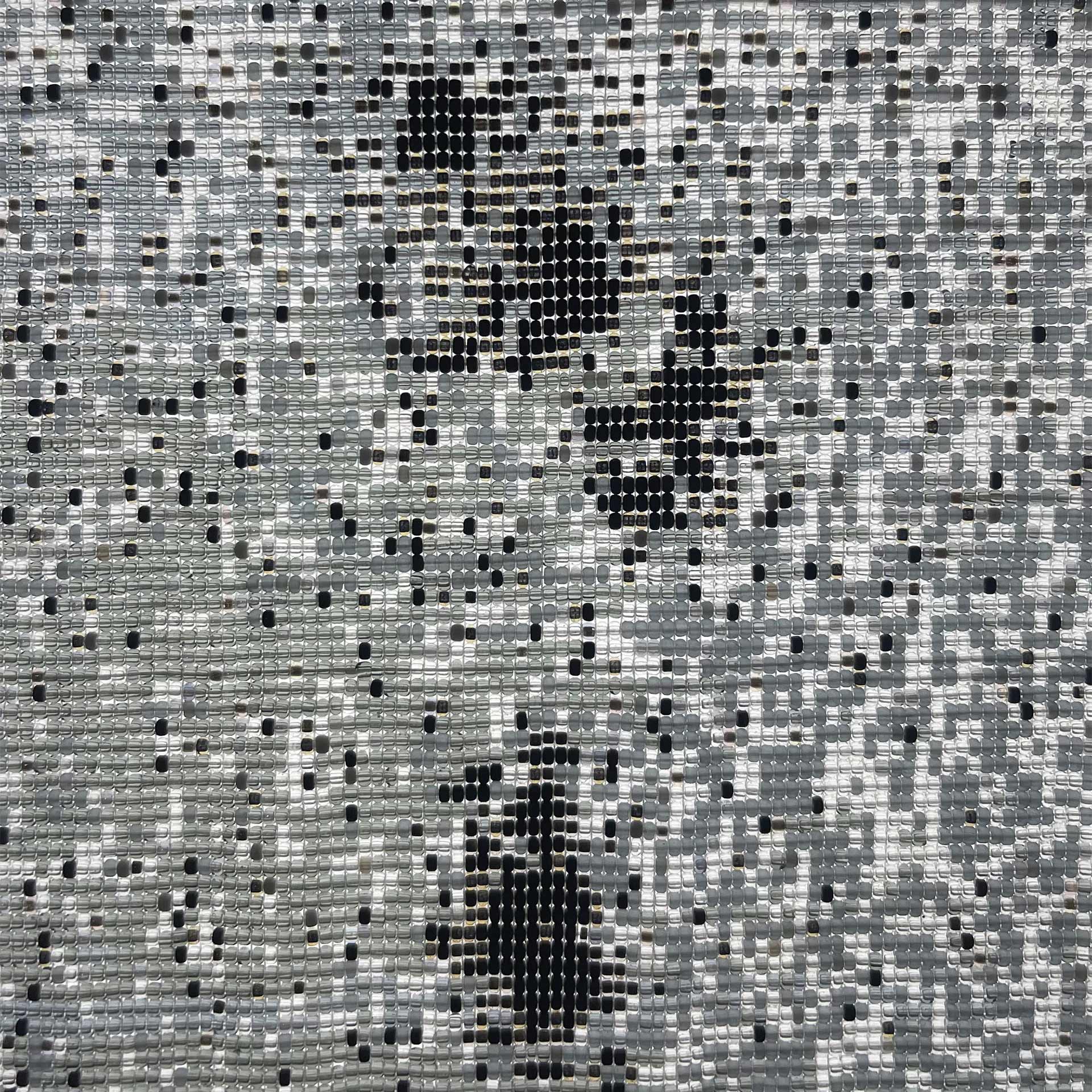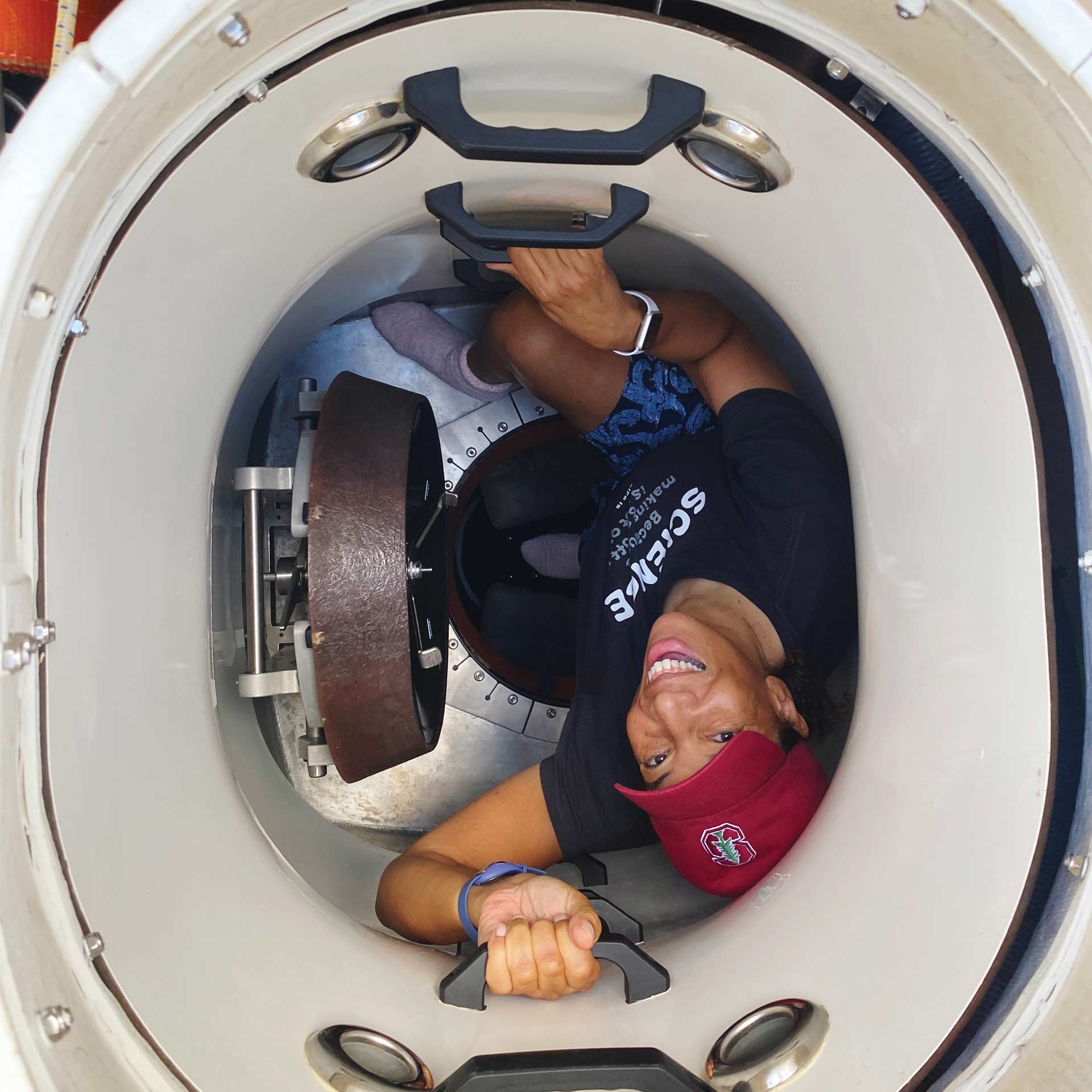Invisible to the naked eye and highly counterintuitive, the atomic-scale quantum world is a bizarre place. Here, one object can occupy multiple states and multiple objects can occupy the same state. Particles can correlate with each other regardless of distance and collective behaviors emerge that can’t be predicted by the actions of individual bodies. How these tiny, strange phenomena underlie our rather orderly, far more intuitive human-scale universe is difficult to know, and physicists who work in this realm are constantly reminded of how fuzzy things can be.
“Even quantum mechanics is an approximation,” says David Weld, an experimental physicist with expertise in ultracold atomic physics and quantum simulation. It’s science’s best and quite successful attempt at explaining the fundamental processes of the universe, while leaving room for things that are not yet known or understood. “Physicists are always approximating,” he adds, “and we just try to be honest and smart about the approximations we use.”
Unlike our orderly, deterministic classical physics, with its well-defined locations and velocities, and discrete objects, the quantum world leans toward randomness. Uncertainty is baked into the math, and scientists speak in terms of probabilities. Beneath all this is one of the fundamental oddities of quantum mechanics, which renowned physicist Richard Feynman called “the only mystery”: Particles are also waves. This duality of matter gives rise to some signature quantum behaviors that when better understood will help us on our quest to understand nature. Harnessed, they can lead to powerful new technologies.
Relationships: Coherence, Superposition, Entanglement
The promise of a quantum computer lies in the ability to perform exceedingly complex calculations at speeds that would be out of reach for even the most sophisticated of classical computers. Enabled by their ability to encode multiple, entangled states, arrays of quantum bits (or “qubits,” the basic unit of information in a quantum computer) could hold multitudes of possibilities, solving problems that would require countless calculations. Imagine being able to predict the interactions of molecules to design the next big antibiotic, or to accurately model complex systems, like our climate.
But before the quantum computer can truly take off, scientists must overcome the problem of decoherence, which results in the loss of quantum information to the environment. Qubits are extremely sensitive to their surroundings and even the slightest perturbation will interrupt their “quantumness” — those behaviors brought on by the wavy nature of matter — including superposition and entanglement. Much effort is put toward isolating quantum bits away from the environment, and at near absolute zero temperatures, to maintain, for example, a lossless state of superconductivity.
Isolation isn’t the only way to maintain quantumness. Stephen Wilson, a materials scientist and co-principal investigator at UC Santa Barbara’s National Science Foundation-supported Quantum Foundry, is developing materials from the molecule up — materials that could generate and maintain quantum coherence over long periods of time, and at higher temperatures.
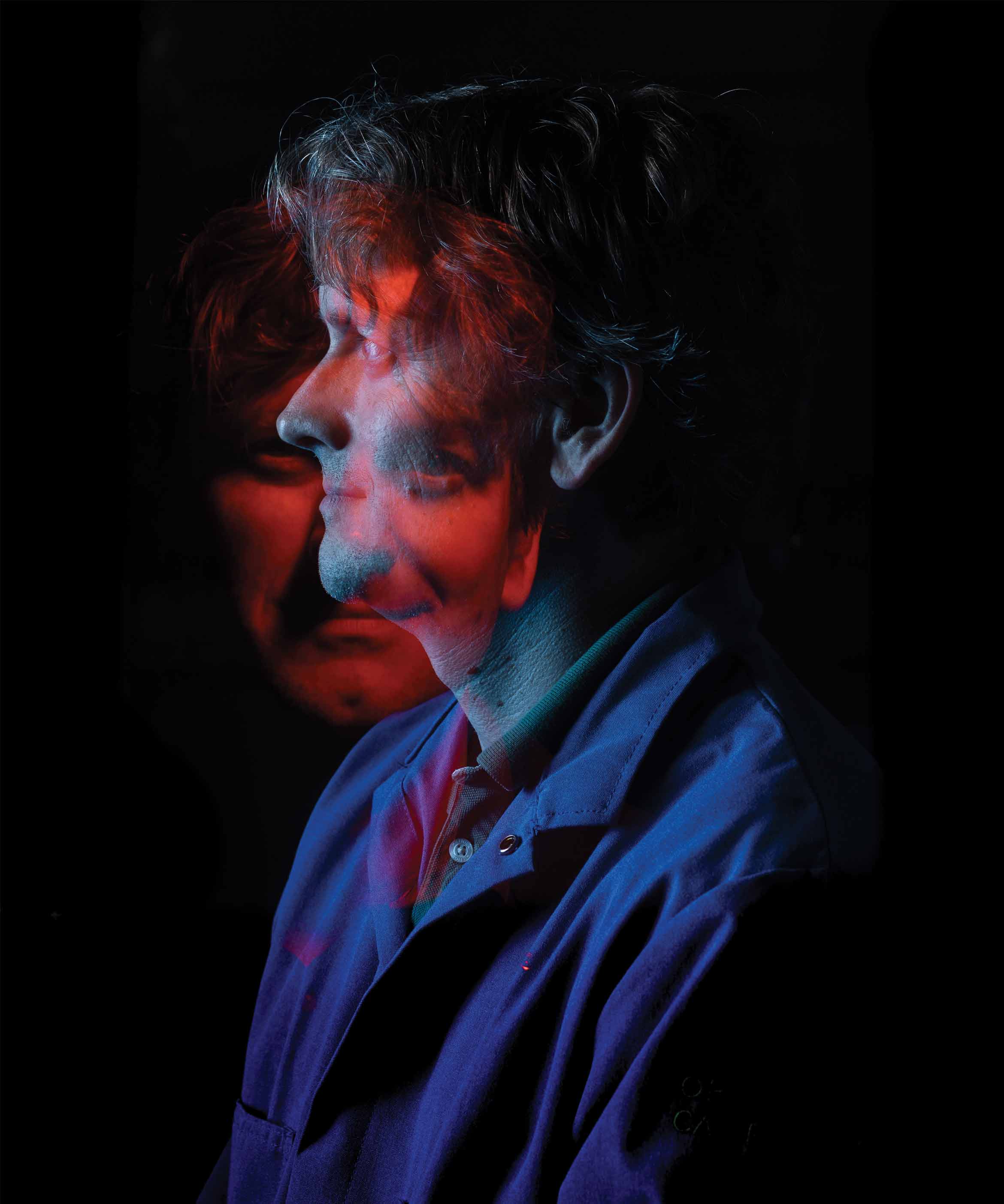
Stephen Wilson
“One way to think about coherence is a sort of time scale over which the quantum information that you’re reading — either the wavelength or the phase — remains well defined,” Wilson says.
Imagine a waveform — a line gently meandering up and down across a horizontal axis. Now add a second waveform along the same axis. If each part of one waveform remains fixed or constant to the corresponding part of the other wave, congratulations — you now have coherence, and a state in which a wave function from one object can split into two states that can interfere with itself is possible. The general tendency of quantum coherence is to be fleeting, but if materials can be made that can enhance or extend this ability, they will be to quantum computing what silicon and transistors have become to classical computers.
The Quantum Foundry is where quantum materials get their start. In this place, akin to an iron foundry where metals are mixed and shaped into functional forms, Wilson and his team seek to merge elements whose molecular structures could give rise to useful quantum behaviors. In one room, they grind and mix material together under vacuum conditions to minimize impurities and unwanted interactions with air, material they then cook at high temperatures to meld together. In another room, a futuristic forge heats elements to 3,000 degrees Fahrenheit — one third the heat of the sun’s surface — to create compounds that would otherwise never be seen on Earth.
One goal for the foundry is to develop new types of superconductors, materials that can conduct, at near room temperatures, with zero resistance. By using the superconducting state for information, qubits can be made that retain their coherence, but special types of superconductors must first be discovered in real materials — a hurdle for those who want to enable wide use of quantum computers.
Wilson and his crew are already scratching the surface of this holy grail of quantum materials, however. Recently, they developed a kagome (KAH-go-meh) superconductor whose electrons self-organize in such a way that a new electronic state of matter emerges that can potentially host quantum information for extended periods of time.
“These types of superconductors are predicted to host anyons,” Wilson says, referring to the electronic states that are of interest to those pursuing topological quantum computing — a branch of quantum computing in which information can be distributed over the surface of the material in “braids,” as opposed to more conventional, trapped quantum particles. This type of logic is thought to make the system more robust to errors and perturbations and could potentially be the key to fault-tolerant quantum computing.
“Another weird thing about this superconductor is that it may actually not be a pairing of two electrons; it may be a pairing of four or six electrons, which has never been seen before,” says Wilson. “And those would also have potential uses in quantum information and perhaps quantum sensing.”
